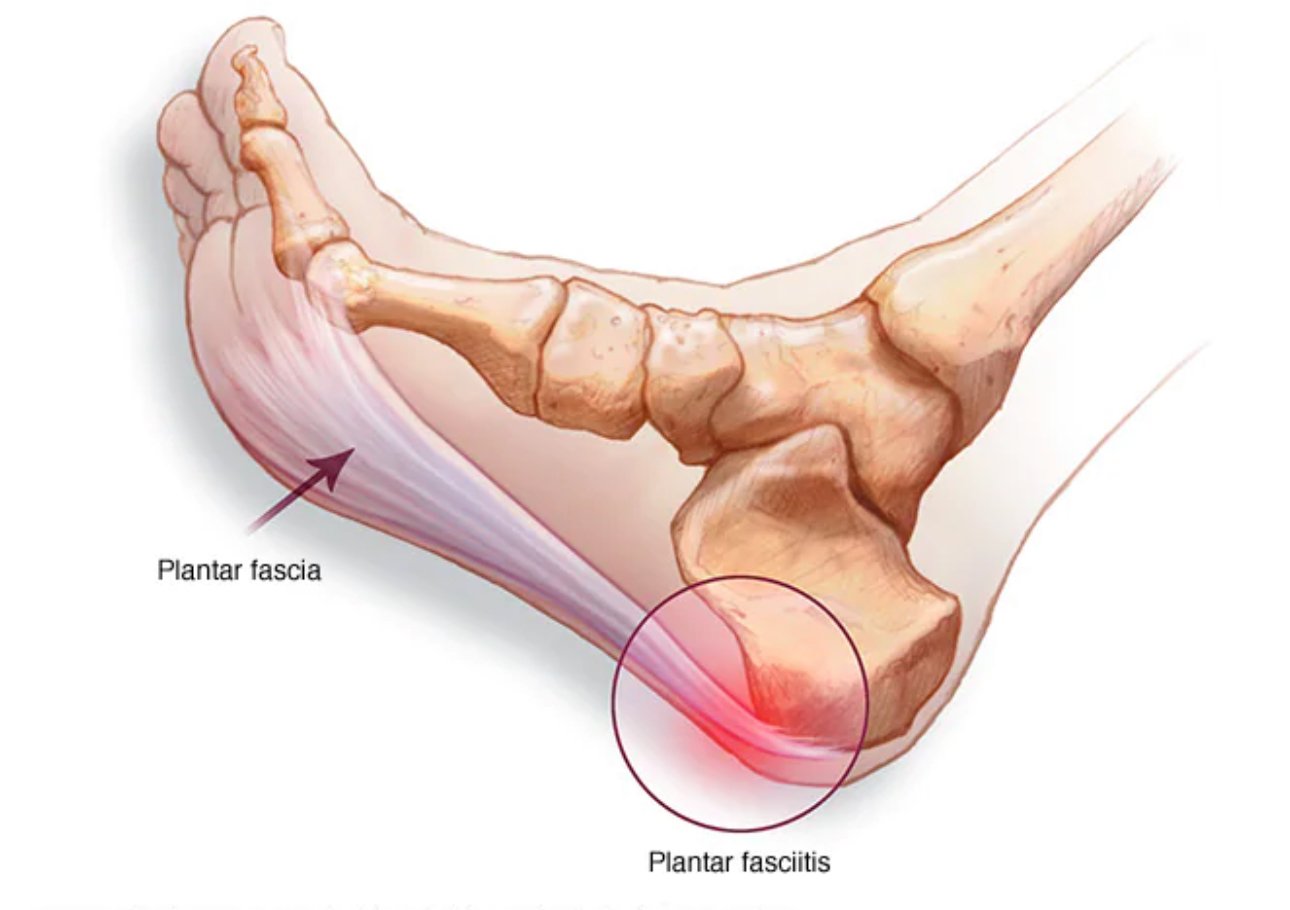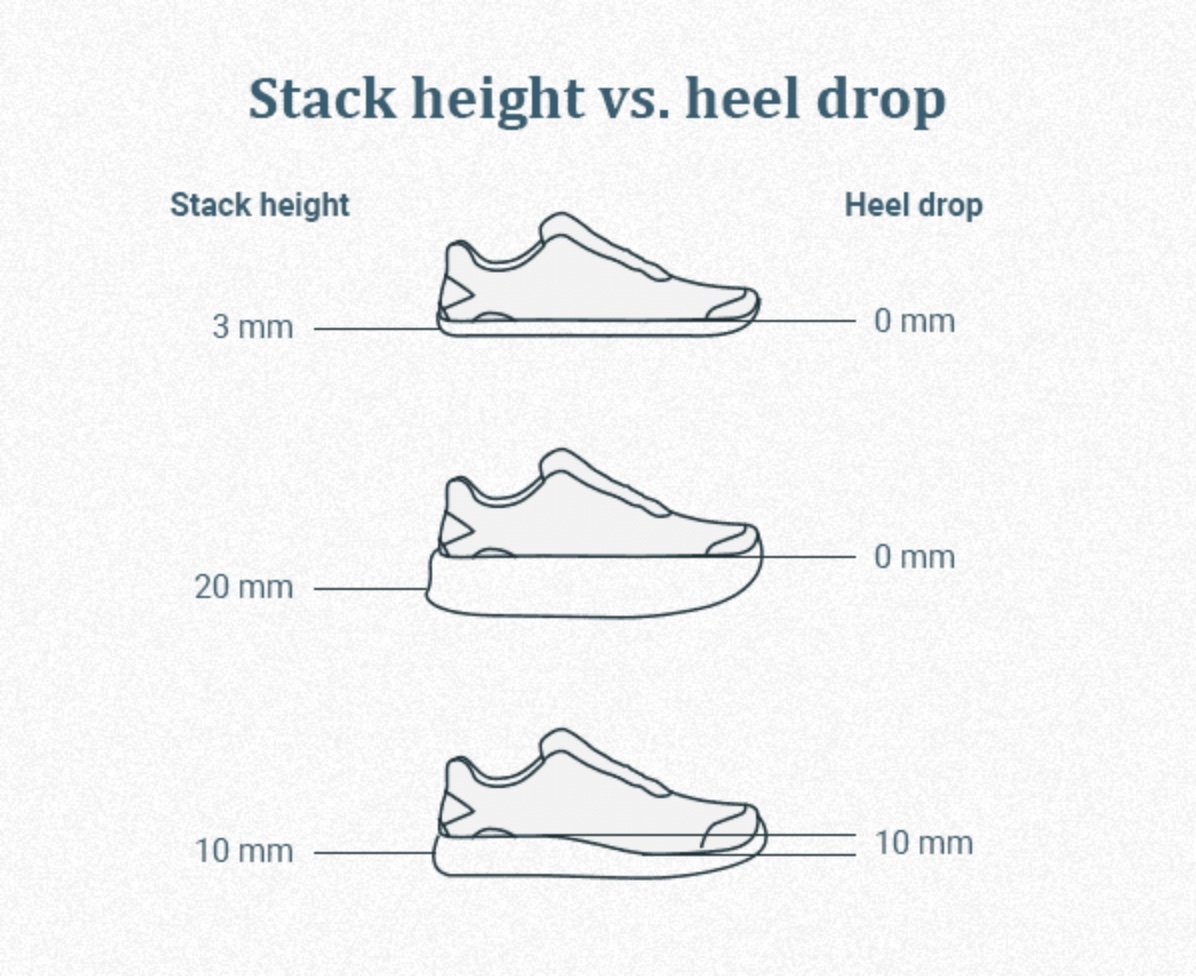How to Prevent Plantar Fasciitis
Are You Running with Plantar Fasciitis?
Expert orthopedic physical therapists discuss what you need to know about plantar fasciitis so you can run pain free.
What is Plantar Fasciitis?
Plantar fasciitis is a common cause of foot/heel pain where there is micro tearing and degeneration of the plantar fascia with secondary inflammation. The more accurate term is actually called plantar fasciopathy, since the condition is not a primary inflammatory process but rather, a degenerative process.
This study explains that plantar fascia is a band of connective tissue that runs from the heel bone to the tendons of the forefoot and toes. Its purpose is to support the arch of the foot and act as a shock absorber when pressure is placed on the foot.
Why does plantar fasciitis occur?
According to this research review, the exact cause of plantar fasciitis is unknown. However, this condition often is related to abnormal biomechanics of the foot and ankle.
Our feet need to be both mobile and stable precisely at different times to support us during weight-bearing activities such as standing, walking, and running. We need to have adequate range of motion in our foot/ankle to pronate and accept load through our foot. But we also need adequate strength and stability in our foot/ankle to control pronation (so we don’t collapse into pronation) and also for supination of our foot to create a rigid lever for push off.
Our hip strength and stability also play an important role in allowing proper mechanics at the foot/ankle.
Who is most at risk to develop plantar fasciitis?
Below are the most common risk factors to develop plantar fasciitis, according to this clinical practice guideline from the Journal of Orthopedic and Sports Physical Therapy:
Limited ankle dorsiflexion range of motion (ROM)
Increased body mass index (BMI) in nonathletic individuals
High or low medial longitudinal arch height (excessively supinated or pronated foot)
Running
Working in jobs that require prolonged weight bearing
What are the common findings we see in runners who have plantar fasciitis?
Below are the most coming findings we see in patients experiencing plantar fasciitis, according the this clinical practice guideline from the Journal of Orthopedic and Sports Physical Therapy:
Heel pain with initial steps after a period of inactivity (such as the first few steps after waking up)
Heel pain that is worse with prolonged weight bearing
Heel pain after a recent increase in weight-bearing activity
Pain with palpation of the medial (inner) heel bone (this is when we press into the plantar fascia’s attachment point on the heel bone)
Limited ankle dorsiflexion ROM
Limited big toe extension ROM
Positive windlass test
Decreased calf muscle strength
Abnormal foot posture (excessively pronated or supinated)
Increased BMI in nonathletic individuals
How can a physical therapist help you overcome plantar fasciitis?
Physical therapy can help you to overcome plantar fasciitis by using hands-on techniques such as massage, joint mobilization, stretching, and exercise to strengthen muscles that are commonly weak in those with plantar fasciitis.
We assess your flexibility, mobility and strength, then we create a plan to gradually progress you back towards your sport. We work on progressively reintroducing running into your program by manipulating the variables associated with running. This study found that faster running is associated with higher load on the plantar fascia. Therefore, we focus on increasing volume and frequency before we increase intensity of your runs. We also coach you on the significance of running on different grades (uphill versus downhill). For example, this study found that a steeper uphill led to more loading of the forefoot. This therefore loads the plantar fascia more.
What are the best exercises for plantar fasciitis?
The best exercises for plantar fasciitis are dependent on the findings from the physical assessment performed (refer to common findings section above). With that said, these are some of the most common exercises we prescribe to our runners who have plantar fasciitis.
For calf flexibility issues, we prescribe a calf stretch.
For ankle dorsiflexion range of motion limitation, we prescribe a knee to wall drill.
For big toe extension limitations, we prescribe a seated plantar fascia stretch.
For hip weakness, we prescribe double or single-legged glute bridging, side stepping, etc.
For those who are excessively pronated, we prescribe variations of calf raises and foot doming + toe yoga due to calf weakness and intrinsic foot muscle weakness. Below are a few of many examples.
For those excessively supinated, we prescribe ankle eversion strengthening. Below is one of many examples.
Can you run with plantar fasciitis?
This depends on the acuity and severity of your plantar fasciitis. For those who are in severe pain, it will be necessary to avoid running initially as you allow the system to calm down and heal. If symptoms are moderate, we typically keep our runners running, but we manipulate the variables, especially intensity (speed). If symptoms are mild, then we continue to allow running and manipulate variables like frequency of running. For example, we find it very helpful to take 1 day off in between runs to allow for 24 hours of monitoring symptoms.
What running shoes are good for plantar fasciitis?
We typically recommend that you look for a stability shoe if you have plantar fasciitis. Some examples include the HOKA Arahi, Mizuno Wave Horizon, and Fresh Foam x860v13.
It is also important to consider a shoe that has a higher heel drop if you have plantar fasciitis. The heel drop of a shoe is the difference in height (in millimeters) between the back of the shoe and the front of the shoe. A high heel drop is usually defined as greater than 8mm. Running shoes with a higher heel drop will make it more likely that you heel strike, offloading the plantar fascia. It will also offload the soft tissue of the calf, Achilles, and plantar fascia itself when standing, walking, and running. Keep in mind that this will also lead to increases in joint stress at the knee, as can be seen in this study.
We typically refer our running clients to Brooklyn Running Company. Their team is great at managing the needs of runners.
Closing Remarks
We hope you found this article helpful. As always, consult with an expert in this field so they can advise and guide you.
If you would like to work with us to resolve your hip pain, contact us below to speak with a physical therapist.
Disclaimer: This is not intended to be formal medical advice. Your individual needs should be met by the appropriate health care practitioners. Please consult with a trusted provider.
Dr. Paul Nasri PT, DPT, OCS, COMT
Dr. Vincent Liu PT, DPT
Doctor of Physical Therapy
The Game Plan Physical Therapy


